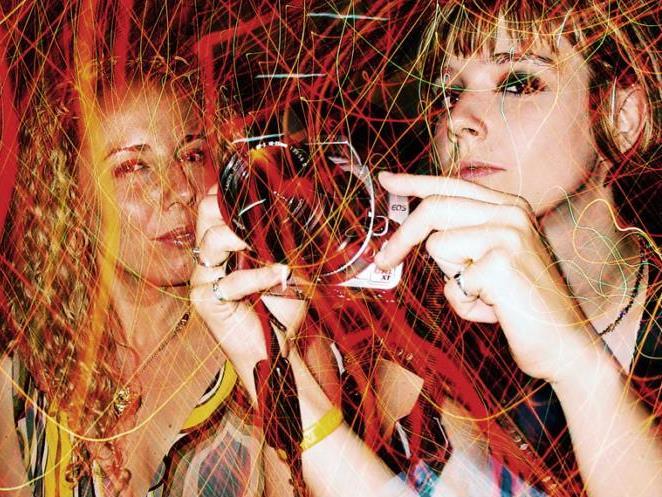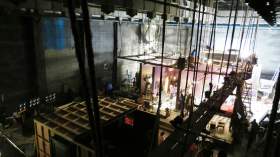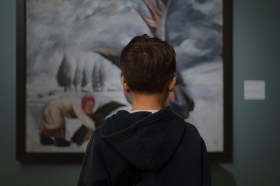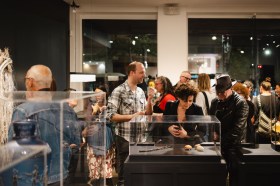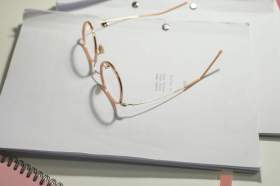Image: artsmidnorthcoast.com
The Mid North Coast is a thriving creative region in Australia with a high level of community arts and community cultural development. With the highest population in regional NSW, including the highest Indigenous population and the highest growth rate in the state, the creative industries have become a cornerstone of its regional economy.
There are many creative communities in the region, including Gloucester, Port Macquarie, Nambucca Valley, Bellingen and Coffs Harbour.
Through new initiatives and networks currently being established across the region, a sustainable and resilient arts culture is being built – and tourism plays an important role in this economic development.
‘There are 10 million visitor nights spent in the region, which means 10 million mornings where someone wakes up and wants to do something cultural,’ said The Legendary Pacific Coast Executive Officer, Belinda Novicky.
The pairing of arts and culture with tourism can lead to economic development by bringing visitors to the area, while also contributing to community wellbeing by invigorating local areas through creative practice. This is helped along by a strong partnership between Arts Mid North Coast and the North Coast Regional Tourism organisation, led by Novicky.
Studies have even shown that cultural tourists spend more than other tourist types and often stay longer in the communities they visit making it a valuable asset to Australia’s regional arts in particular.
Here are some of the strategies behind the research and how they have been put into practice across the Mid North Coast.
Technology
Advances in digital media have fuelled the development of arts and cultural tourism. This can be seen in how organisations like The Legendary Pacific Coast have developed online. Here in the digital space, directories and event listings are used to reach a broader audience and help connect the creative community. These digital hubs are a boon for small organisations that can access big audiences.
The Arts Mid North Coast website also supports artists and lists events, from the smaller Bush Poetry at the Saleyards in Gloucester to the larger annual winter community event Chill Out. Through initiatives such as SmartArt and Creative Pathways listings in areas such as tertiary education, marketing development, grant writing, and funding opportunities help artists and creative workers find relevant information. The goal here is to help the creative sector become more entrepreneurial and digitally savvy, and therefore more sustainable.
Cultural trails
Another useful strategy that brings the area together is an innovative use of cultural trails that specifically target tourists and encourage visitation. The Culture, Arts and Heritage Trail on the Legendary Pacific Coast website, launched three years ago, successfully brings smaller arts organisations together and highlights local arts and culture.
The listings on the Arts Mid North Coast and The Legendary Pacific Coast are extensive. In Port Macquarie there are 76 listings on the trails, including Hello Koala’s Sculpture Trails and the Port Macquarie Gallery. For the smaller area of Nambucca there are a total of 21 listings that vary from the example of Bowraville as a creative community worth a visit, while Coffs Harbour has 53 listings including the Bunker Cartoon Gallery, the only cartoon gallery in the southern hemisphere.
From artist markets, galleries, Indigenous culture, and recommended self-guided tours, the cultural trails effectively bring the regions arts organisations and events together according to theme. For example, a public art aficionado interested in visiting the region can select the relevant category to find an all-inclusive list of public art across the region.
Focus on the experience you are creating
For Kevin Williams, Executive Director of Arts Mid North Coast, it is all about the ‘experience’ visitors have rather than necessarily the infrastructure in place.
‘On one side you might have someone who says “I’ve got a B&B” and on the other side you might have someone who says “I have an art gallery” but it’s about the experience of the visitor that is the important aspect. It’s about focusing on the visitor experience, which also of course, is extremely relevant to those who live here too.’
Novicky agrees. ‘But we need to build those experiences and networks across The Legendary Pacific Coast into other areas – lots more opportunity to secure economic benefits from working better with artisans and arts networks.’
Creating arts and cultural destinations in regional areas brings visitors and establishes a certain type of creative ecology – and as Williams and Novicky suggest you don’t need to strictly be in the arts to benefit.
This means when someone plans a visit to the Port Macquarie Museum, they might stay at The Observatory Resort Hotel or just up the road Rydges Port Macquarie, enjoy a horse ride to a historic pub with Bellrowan Horseriding, eat at numerous local cafes and restaurants, and may even call into Billabong Koala and Wildlife Park on the way home. In the end it is the combination of these local organisations and businesses that create the experience.
Bring food and art together
Another common theme for cultural trails in the region is food and art. The Legendary Pacific Coast website draws together a culinary itinerary to make it easier for visitors to explore the region.
In the end, it goes back to the experience of the visitor, said Williams. ‘For cafe owners their main business is serving food and drink, but they also recognise that people sitting in the cafe enjoy additional levels to the experience and visual arts or music are the obvious ways of increasing that experience.’
The Old Butter Factory Cafe in Bellingen Shire is a good example of how food and art can be brought together to the mutual advantage of both hospitality and creative industries.
The heritage complex houses its namesake, the cafe, but also includes the Nexus Community Gallery, the Woodcraft Gallery, and other shops owned by local arts and craftspeople.
This also improves the cohesion between the craft and tourism sector by creating stronger linkages between the two, said Novicky.
Identity
The identity of the town itself is also developed through an engagement with the arts – in turn increasing visitation by creating a distinct personality and character that people will be drawn towards.
‘In relation to smaller communities, creative activities are often one of the easiest ways of providing a new experience in a town so then you start getting some critical mass out of that, which then generates traffic to the community and adds to the local economy,’ said Williams.
An example of a small event that has grown into something significant can be seen in the small town of Kendall. About twenty years ago a violin competition for young people was set up due to the wonderful acoustics in the small town hall. ‘That’s now the Kendal violin competition and it is one of the most prestigious violin competitions for under people under 25 in South East Asia,’ said Williams.
Now a major event the Kendall National Violin Competition has put the town and subsequently all the local businesses on the map.
Developing regional arts profile
Leveraging off a strong social media presence also proves a fruitful endeavour for developing the profile of arts organisations in small towns.
As the Arts Mid North Coast website houses the only regional events calendar for the area, the organisation encourages event organisers and venues to create listings to showcase what is going on.
‘We then use those listings to highlight events through the e-news letter, two Facebook pages, Instagram, twitter, and a weekly radio session on ABC radio,’ explained Williams.
‘The benefit of that is I might be talking on ABC about something or it might go out on our social media, something that’s on in say Quirindi, which has a population of 100 or so, giving each small town, gallery or event the opportunity to have a regional profile.’
The Legendary Pacific Coast also provides joint tourism marketing and promotion efforts for the tourism and crafts sector to raise its profile. The launch of the recent The Legendary Pacific Coast Fly Drive Campaign includes culture tourism promotion to specifically highlight the arts and crafts experiences available to visitors.
This profiling of events can then have a domino effect if other media gets wind of the interesting things going on in the region.
For artist David Barden, who runs the wood turning gallery Wood We Create and previous owner of award winning tourist attraction Coffs Harbour Butterfly House, organisations like The Legendary Pacific Coast can only do so much. The artists’ themselves need to meet them halfway.
‘Artisans need to have an understanding of tourism business basics, which allows for them to be more successful in reaching tourism markets,’ Barden concluded.
To find out more about how arts and tourism is bring connected across the region visit http://pacificcoast.com.au/
